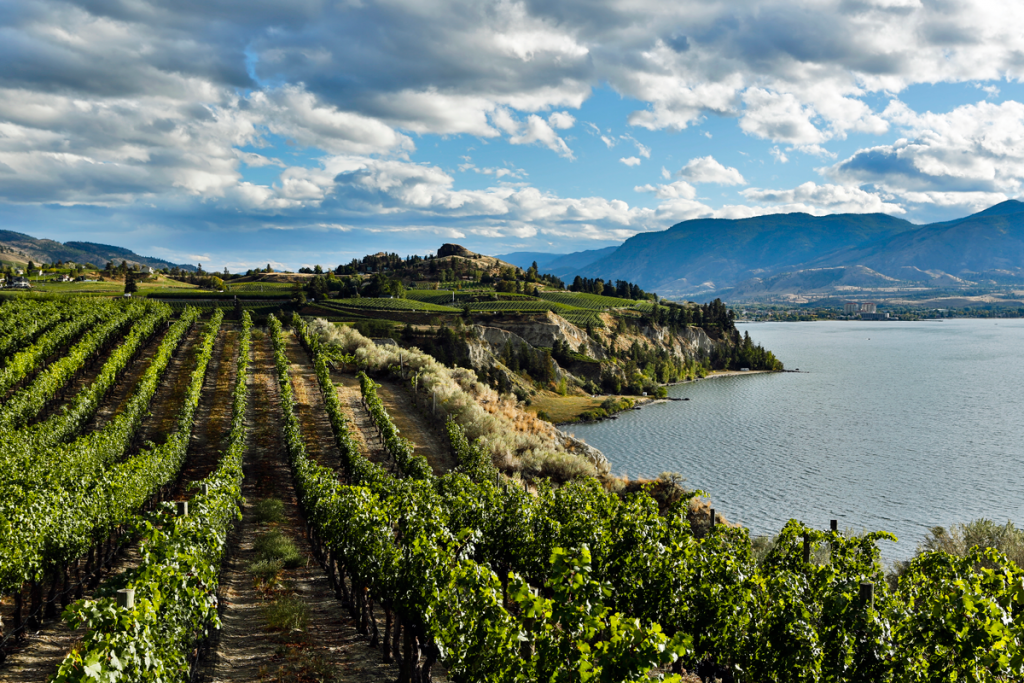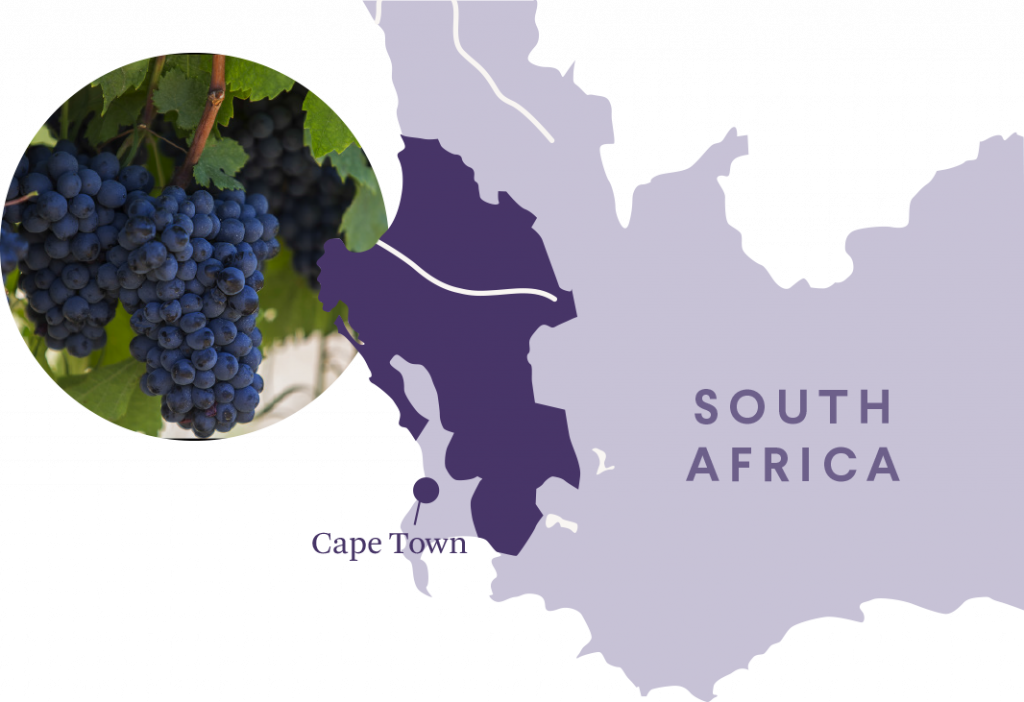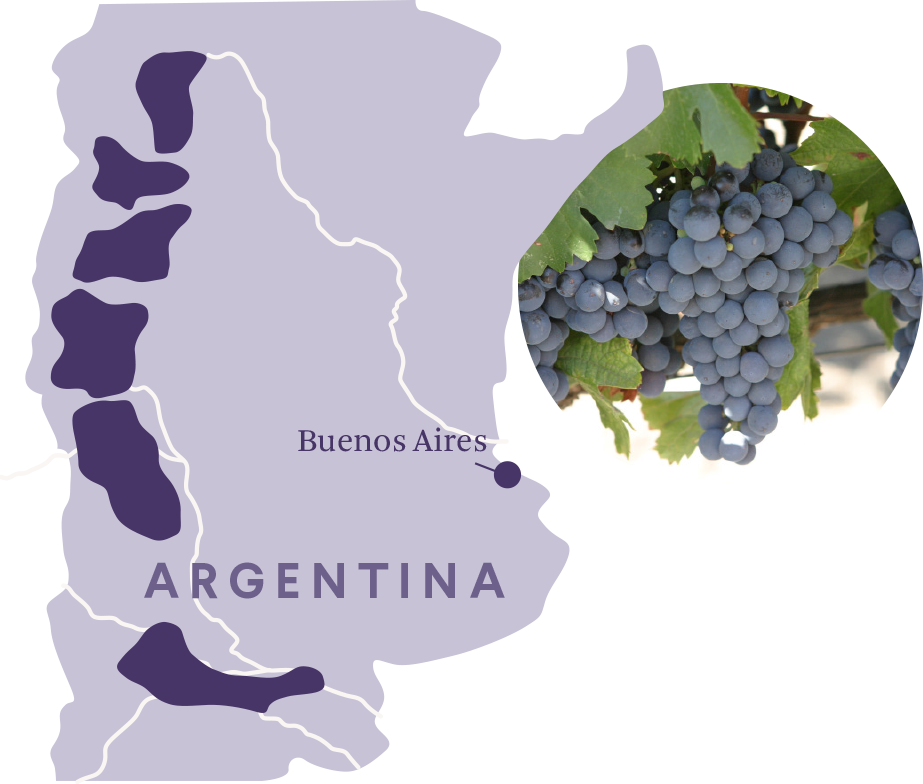
Wine Culture Magazine

istock.com/laughingmango
Pinot Gris, Chardonnay, Gewürztraminer. Merlot, Pinot Noir, Cabernet Sauvignon. The top white and red grapes grown in British Columbia are familiar names. These classics are established and respected the world over, so it’s not surprising that they were among the first selected to plant in our relatively young wine region.
That youthful, adventuresome spirit is to our advantage. We don’t have the restrictive appellation laws governing varieties that most wine regions do. We are free to plant and produce what we want. It’s fitting for our colourful Canadian melting pot of cultures to have a mosaic of wine grapes plotted across the province; already, more than 60 different wine grapes are grown across B.C., with more being trialled every year.
Here are four surprising global grapes that have shown promise in B.C., along with an example worth seeking out.
 Grüner Veltliner
Grüner VeltlinerAustria’s groovy white grape is appreciated the world over, though GrüVe’s charm is relatively unknown locally. Is it the umlaut that throws folks off? The pronunciation? (Is it Groo-ner Velt-LEEN-er or Gree-ner VEHLT-ly-ner?) This crisp, herbal, lemon-oil- slicked and white-pepper-scented grape is alluring in youth, though with a few years’ maturity the zestiness transforms into a honeyed, stony and profound wine, akin to fine Chenin Blanc or Sémillon. Amazingly food-friendly, GV shines as a partner for tricky foods such as artichokes, asparagus and arugula.
![]() Culmina Family Estate Winery
Culmina Family Estate Winery
2016 Unicus
(Golden Mile Bench, $27)
You’ll be forgiven for thinking you’re nosing a Sauvignon Blanc, with heaps of meadow grass, bright grapefruit, Asian pear, white peach and lemon peel on this shining Grüner Veltliner. On the higher-elevation Margaret’s Bench vineyard, the grape gains freshness and acidity, while absorbing the warm Oliver sunshine. A split between concrete amphora, concrete egg and stainless steel ups the complexities and provides a textural background to streamlined fruit.
 Albariño
AlbariñoOne of northern Spain’s most prolific white grapes, Albariño makes up the majority of plantings in Rias Baixas, as well as across the Minho River into Portugal’s Vinho Verde, where it is known as Alvarinho. This low-yielding, mineral-lined grape makes wines with white flowers, peaches, apricots and almonds. It can be vinified light and sprightly, with refreshing acidity and bounce, or left to hang and build ample flesh and alcohol. As you might expect from its Iberian location, the wine is perfectly suited to pairing with seafood.
 Terravista Vineyards
Terravista Vineyards
2016 Albariño
(Naramata, $25)
The third vintage of this Naramata Bench-dominant Albariño is 70 per cent grown on Terravista’s home Lone Hand Ranch Vineyard, with the remainder coming off the Gravelbourg Vineyard on the Black Sage Bench. The nose is an enticing, potent mix of anise, nectarine, tangerine and apricot that remains fresh throughout its full, off-dry, glycerol-slicked palate. A flush of ginger spice permeates the finish that remains bright, suggesting glass after glass.

Pinotage is uniquely South African, born in 1925 via a crossing of Pinot Noir and Cinsaut. Like its parent Cinsaut, Pinotage is hardy and vigorous, early ripening, and with high tannins and sugar levels. Though styles vary greatly, the grape commonly shows a deep ruby to crimson hue and aromas of mulberry, plum, black cherry, bramble, damson, prune, and sweet spice and clove. The beauty of the grape (remember: chameleon-like Pinot Noir is its other parent) is that it can produce light and easy wines, like youthful Beaujolais, or it can go ripe and wood spiced, like Zinfandel.
 The View Winery
The View Winery
2015 Pinotage Reserve
(Kelowna, $26)
Ripe and rich, with lightly toasted oak propping up brambled, spiced dark berries, plums and cherries. There’s a wave of espresso and peppercorns that seasons this fleshy, handsome red. The View are Pinotage specialists in B.C., making it into white, rosé and red, as well as using it in their Distraction Frizzante.
 Malbec
MalbecThough the black, densely flavoured grape is native to the southwest of France (it is one of the six players in the Bordeaux blend), it has fallen steeply in plantings and popularity in France, holding steadfast mainly in the savoury and tannic wines of Cahors. Malbec’s superstardom has come from Argentina, where it has found a welcome home tucked against the sunbaked, elevated Andes Mountains. Typically full bodied, wines show intense blueberry and black plum, backed up by cocoa, smoke and spice, all laid out across a velvety texture.
 Painted Rock Estate Winery
Painted Rock Estate Winery
2015 Malbec
(Skaha Bench, $43)
Violets and wild blackberry flood this fleshy palate, scented with blueberry and clad with finely grippy tannins. The wood (18 months in French oak, 30 per cent of which was new) is handily absorbed by the fruit density, leaving structure and an alluring spiciness on the finish. Malbec can easily absorb the 15.2 per cent alcohol that the Okanagan can easily produce, as this age-worthy wine attests.

Treve Ring is a wine writer, judge, speaker, and perpetual traveller. A certified sommelier, WSET diploma holder, French wine scholar and Sherry instructor, she is based on Vancouver Island, but is most often found on a plane or in a vineyard.

Treve Ring is a wine writer, judge, speaker, and perpetual traveller. A certified sommelier, WSET diploma holder, French wine scholar and Sherry instructor, she is based on Vancouver Island, but is most often found on a plane or in a vineyard.
Copyright © 2025 - All Rights Reserved Vitis Magazine